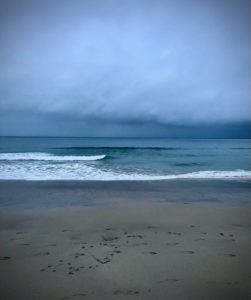
I have been reading a book about Vichy France: this was the period after the defeat of the French army in the second world war – 1940.
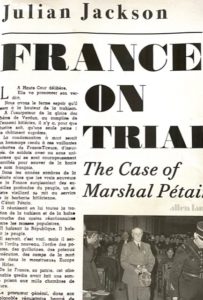
This period has been a speciality of mine; at least the 1930s and 40s. I think it would be fair to say that there was enormous upheaval in the 1930s – socio-economically – with strikes and high unemployment in many European countries. This manifested itself, in France at least, as a crisis in the Republic – with many looking back to previous monarchistic, religious times as better than the ones they were experiencing. One also has to recognize that before the full horror of the Nazi Holocaust and the Stalinist Gulag, the alternatives of Fascism and Communism seemed like realistic solutions. Therefore, many French men and women welcomed it when Marshall Phillippe Pétain – a hero from the first world war – took over and negotiated an armistice with the German aggressors. France was divided into ‘occupied’ and ‘unoccupied’ areas and governance share accordingly with the Germans. The Republican principles of Liberté, Fraternité and Egalité were replaced with Famille, Travail, Patrie to acknowledge a return to traditional values and ways of life. Of course, things did not work out as hoped: the war worsened for the Germans and they became increasingly demanding: for Jews to be sent to Germany and Concentration Camps, and for French workers to be sent to Germans factories as a policy of STO (Service de Travail Obligatoire). General de Gaulle flew to London and called on the French to continue to resist. This is the background to this excellent book by Julian Jackson and it tells of the trial of Pétain after the war. Many so-called collaborators were imprisoned, some were even executed. The account details the prosecution and the defense. Which were…..? Well, Pétain certainly collaborated and he stood by as the Nazis increasingly insisted on control of deportations, etc. Still, he claimed that he bought France time, and even reduced the numbers deported. There is some evidence that it could have been worst without him and Vichy (the place of government). Yet others close to him were more overtly Fascist. The overall impression is of an old man (he was in his 80s) losing control of the situation. As I say, the horrors of the Nazis were not entirely known at the time, although they became increasingly so. There was not much he could do about it and went along with things. He was found guilty and sentenced to death – which was commuted to life imprisonment because of his age. Many, however, were on his side – the Church, and those critical of the Republic. Pétain was one of the latter in the 1930s, and obviously took advantage of the situation in 1940 to re-establish a more traditional set of values in France. But, the allies and with them De Gaulle won – the Germans lost, which left Pétain marooned. He spent his last years in semi-prison on an island off of the Normandy coast, but the temptation to rehabilitate him and to use the vision he had of a non-Republican France was taken up by many in the decades that followed. Even in the last Presidential elections in France, one candidate tried to rally behind the so-called heroism of Pétain. This did not quite catch on, but the forces underpinning these moves certainly remain.
On the intellectual front, a new interview with me about Pierre Bourdieu – in the light of my latest Metanoiabook:
http://www.michaelgrenfell.co.uk/videos/lectures-and-interviews/
I go down to Cornwall for the early days of autumn. Stormy skies:


But, some nice cliff walks. Cape Cornwall and Godrevy:
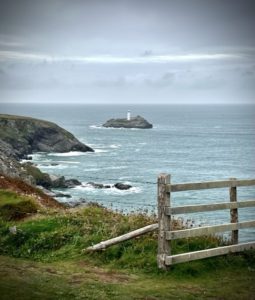
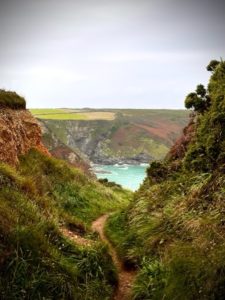

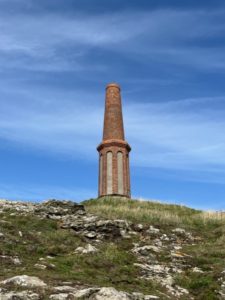
Down in Mousehole of course….
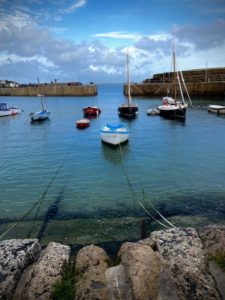
….and a meeting to commemorate the beach pool there. Someone has brought out a book on Beach pools of the world; this is where a pool is constructed to be replenished with water by the tides. There is one in Mousehole; constructed for the community and by the community. I join in the meeting as one who was there when it was first constructed; we children helped to clear the space of pebbles. Because of the ravages of the sea, it has had to be rebuilt several times since then.
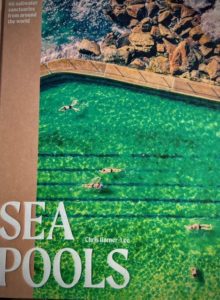
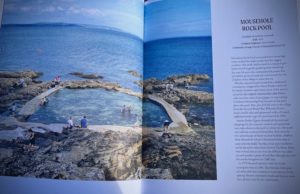
I visit the old stone cross – the one that Ithell Colquhoun named her residence after. As a child I would climb on it.
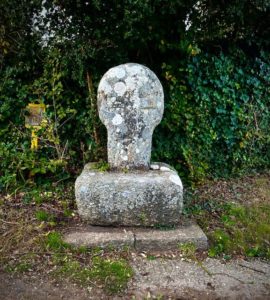
Same door – me as a baby with my Grandmother – and now years later:
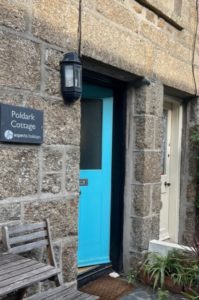
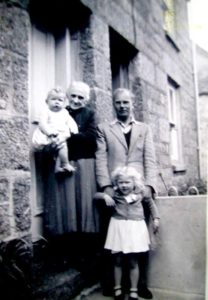
Then, on to Truro. The magnificent Cathedral:

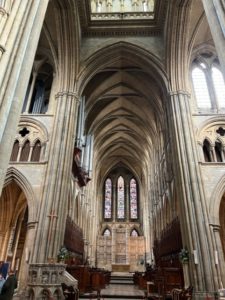
I also visit the Museum there. Some exhibits concerning ancient customs. The Padstow Hobby Horse:

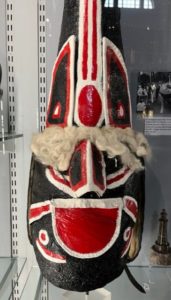
Also, an exhibition of waste objects washed up on beaches in Cornwall:
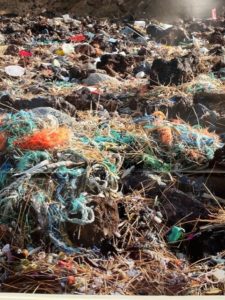
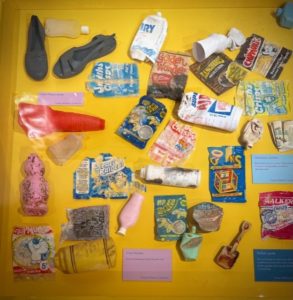
More walks involving menhirs. The famous Men-an-Tol:
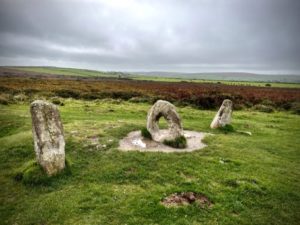
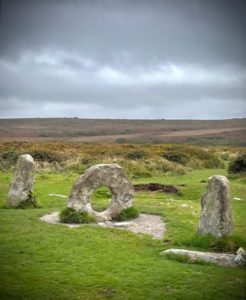
And, a nearby standing stone:
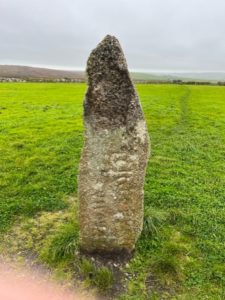
Both approximately 4000 years old.
As always, old mine shafts are never far away:
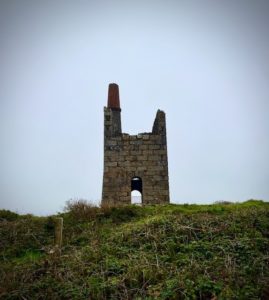
There is a kind of anniversary exhibition of one of the St Ives Galleries – the New Craftsman. Founded by Janet Leach – wife of the famous potter Bernard Leach – in the 1950s, it has exhibited many of the leading St Ives artists since then:
Wilhelmina Barnes-Graham and Terry Frost:

Sandra Blow:

Bryan Pearce:
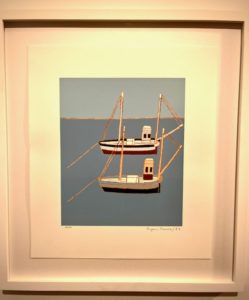
Matthew Lanyon:

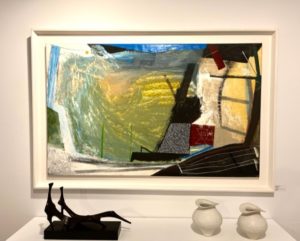
Breon O’Casey:

I take a special interest in some of the Churches that way. Morvah:
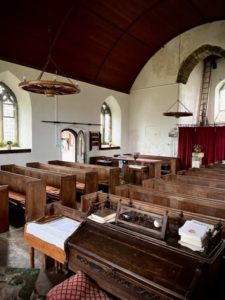
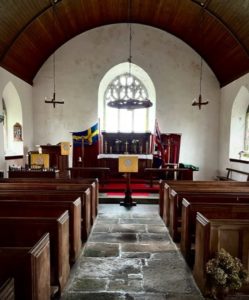
Oddly this church is dedicated to St Brigit of Sweden – hence the Swedish flag. The only one so named in the UK. Apparently, there was a cult of St Brigit in England in the C14. Now it is linked with an area she is identified with in Sweden – various gifts in the Church. It is quite a spare church. In fact, it was renovated in the C18. Before then, it had lost some of its wall and roof. Cattle grazed inside apparently!
St Just:
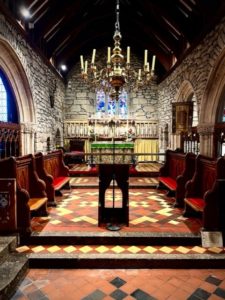
And, Sancreed Church looking very autumn like.
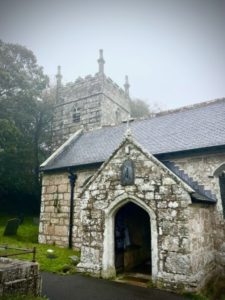
The coast too with approaching storms:
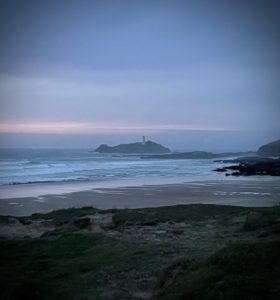
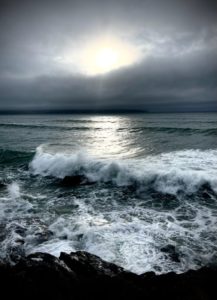
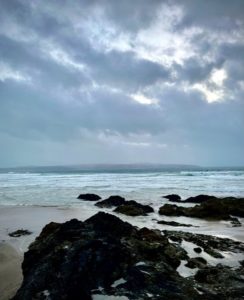
Penzance, and winter not far away now:
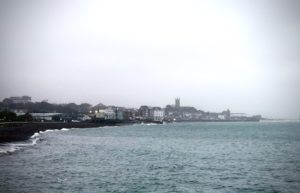
Revellers in a restaurant giving onto the beach in St Ives:
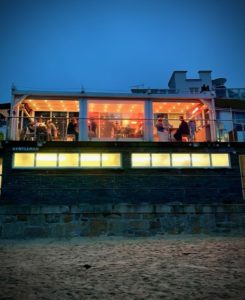
I buy a Pumpkin for soup, roast, risotto, cake, etc. It IS that time of year.

The Summer is gone:
